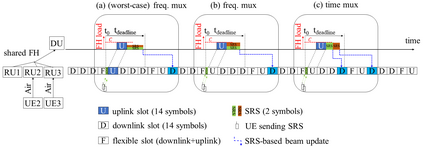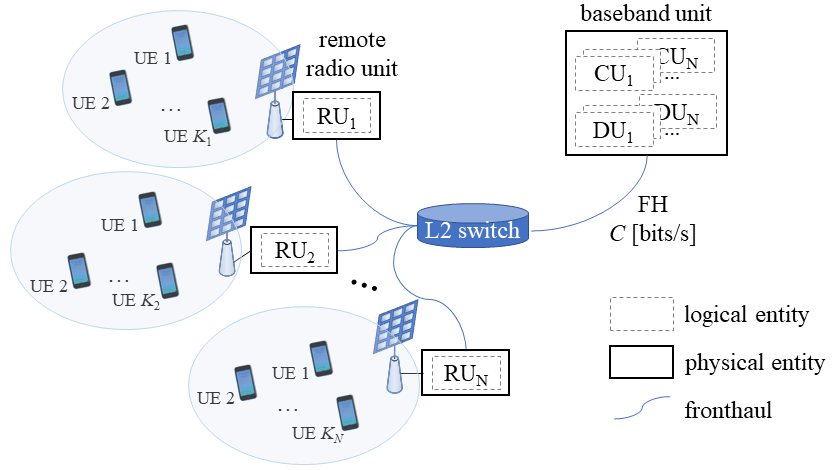There is a widely held belief that future Radio Access Network (RAN) architectures will be characterized by increased levels of virtualization, whereby base station functionalities, traditionally residing at a single location, will be scattered across different logical entities while being interfaced via high-speed fronthaul (FH) links. For the deployment of such FH links, operators are faced with the challenge of maintaining acceptable radio access performance while at the same time keeping deployment costs low. A common practice is to exploit statistical multiplexing by allowing several cells to utilize the same FH link. As a result, in order to cope with the resulting aggregated traffic, different techniques can be used to reduce the required FH data rates. Herein, we focus on FH compression control strategies for multiple-cell/multiple-user scenarios sharing a common FH link. We propose various methods for sounding reference signal (SRS) handling and analyze different FH-aware modulation data compression and scheduling strategies. Considering a full system setup, including the radio and FH access networks, numerical evaluation is conducted using a 5G NR system-level simulator implemented in ns-3. Simulation results show that, under stringent FH capacity constraints, optimized modulation compression strategies provide significant user-perceived throughput gains over baseline strategies (between 5.2x and 6.9x). On top of them, SRS handling methods achieve additional 2% to 41% gains.
翻译:人们广泛认为,未来的无线电接入网络(RAN)架构的特点是虚拟化水平的提高,基站功能传统上位于一个单一地点,将分散在不同逻辑实体,同时通过高速前厅链接进行连接。对于FH链接的部署,操作者面临维持可接受的无线电接入性能的挑战,同时保持较低的部署成本。一个常见的做法是利用统计多路转换,允许几个单元格利用相同的FH链接。因此,为了应对由此产生的总流量,可以使用不同技术来降低所需的FH数据率。在这里,我们侧重于多细胞/多用户情景的FH压缩控制战略,共享FH链接。我们提出了各种声音参考信号(SRS)处理和分析不同的FH-aware调制数据压缩和调度战略。考虑到一个完整的系统设置,包括无线电和FH接入网络,因此,在 ns-3 中采用5G 5. 系统级模拟器进行数字评估,以降低所需的FH数据率。我们着重关注多细胞/多用户情景的FH控制战略,通过S-S-S-S-S-S-S-Simmimal 战略,在严格的基线战略下,通过严格实现S-S-resmaimimal 的收益。







